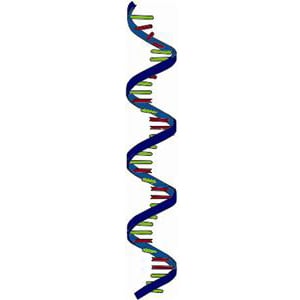Question:
What is the Difference between DNA Purification and RNA Purification?
The Protein Man Says:
Understanding the specific roles DNA and RNA play is an important factor in most molecular biology, genomics, biotechnology and epidemiology studies. However, you will need high quality DNA and RNA samples to be able to satisfy the requirements of your experimentation and subsequent downstream applications since using contaminated samples cannot give you accurate and biologically relevant results. And this is where DNA and RNA purification comes in.
So, what is the main difference between DNA purification and RNA purification?
 DNA Purification
DNA Purification
DNA can be prepared from a whole range of materials including blood, exfoliated bladder cells, frozen tissue samples and paraffin tissue blocks. Since DNA is generally stable under suitable storage conditions, it can be prepared and stored in batches.
DNA extraction and purification involves three basic steps – breaking the cells open to expose the DNA, removing the membrane lipids through the use of an appropriate detergent and precipitating the DNA with alcohol. There are also two optional steps that are almost always done prior to the precipitation step - the removal of proteins by adding an appropriate protease and the removal of RNA with the use of an RNase.
Through DNA purification of your samples, you can minimize the disturbance from non-target DNA and other contaminants and increase the stability of your sample in long-term storage.
RNA Purification
RNA extraction and purification, on the other hand, involves four basic steps. First, you need to disrupt the cells by adding guanidium thiocyanate and a reducing agent to the sample and then subject it to vigorous shaking or vortexing. This step will also break the disulphide bonds and inactivate the contaminant proteins present in the sample.
After cell lysis, you need to add phenol and chloroform-isoamyl alcohol to separate your RNA sample from the solution. The aqueous phase contains your precious RNA so you need to put it in a separate tube, add isopropanol and centrifugate the solution to precipitate your RNA. Washing the precipitate with 75% ethanol will then remove any impurities from your sample.
However, it is important to note that RNA is less stable as compared to DNA so you should only isolate it prior to use. Special care should also be taken before, during and after the process to ensure the purity of your sample. Remember, even the smallest amount of RNase can compromise its quality.
DNA and RNA can also be isolated from the same biological sample by extracting a total nucleic acid fraction and dividing it into two parts – one of which will be treated with a DNase 1 while the other portion will be treated with RNase A to recover RNA and DNA, respectively.






